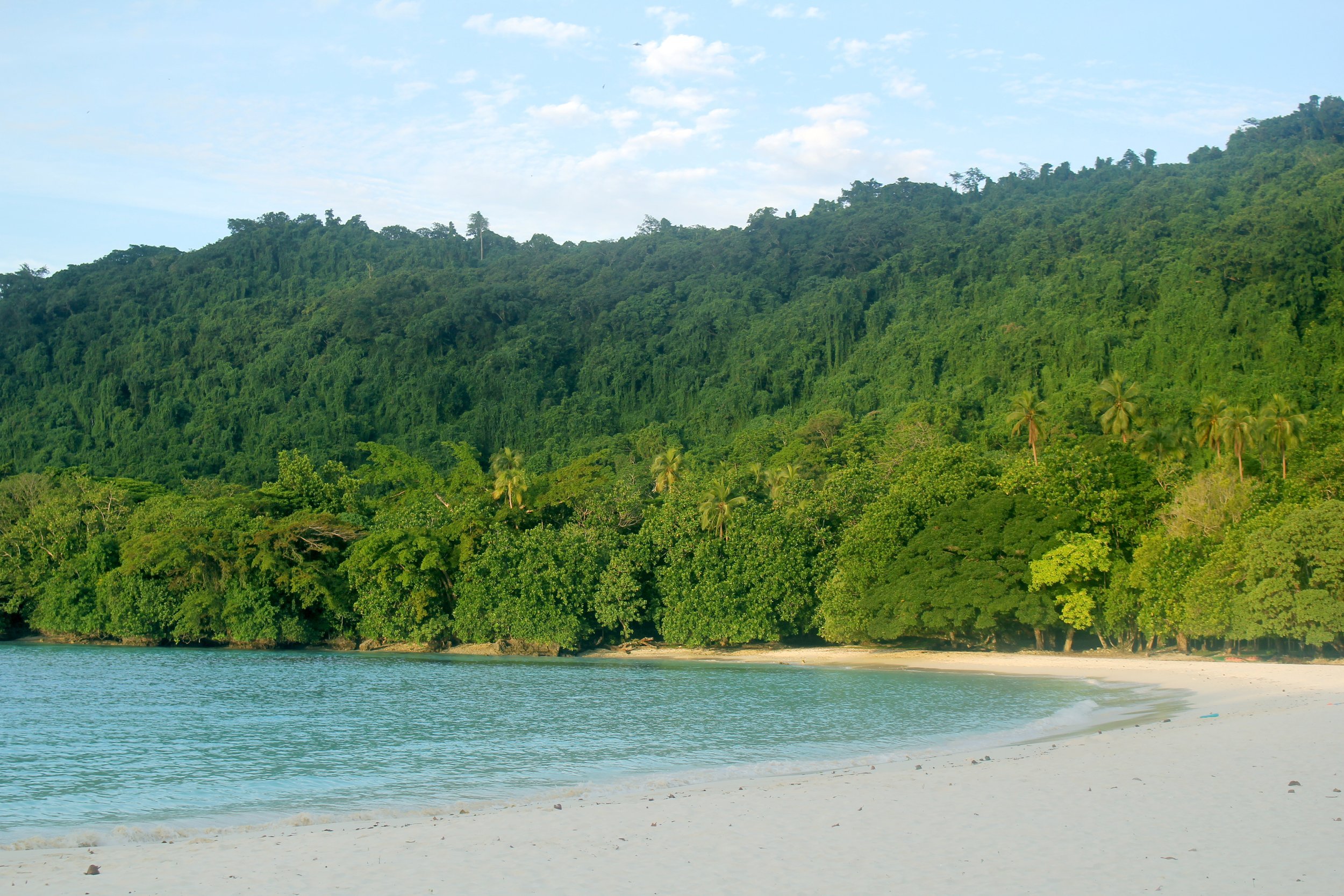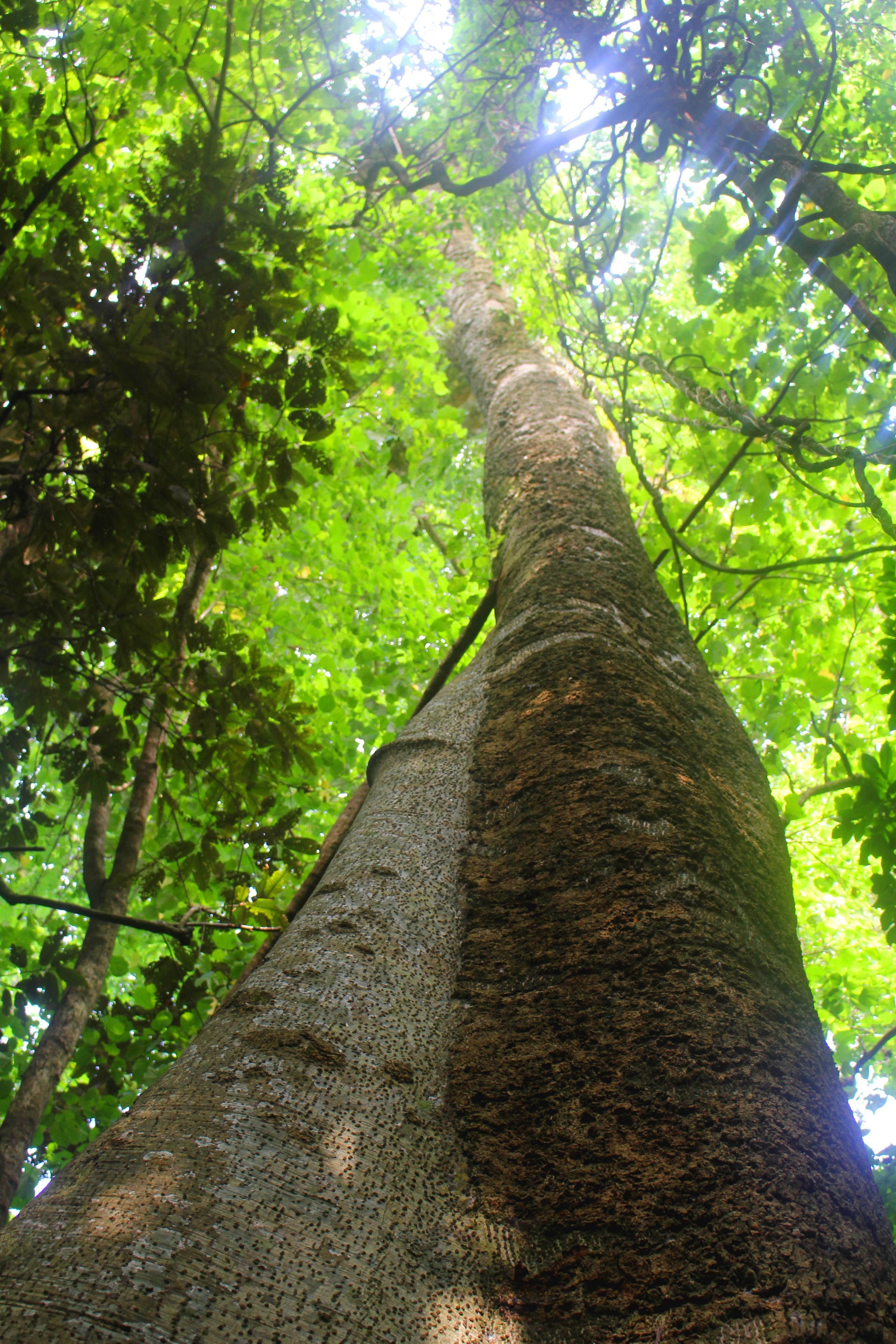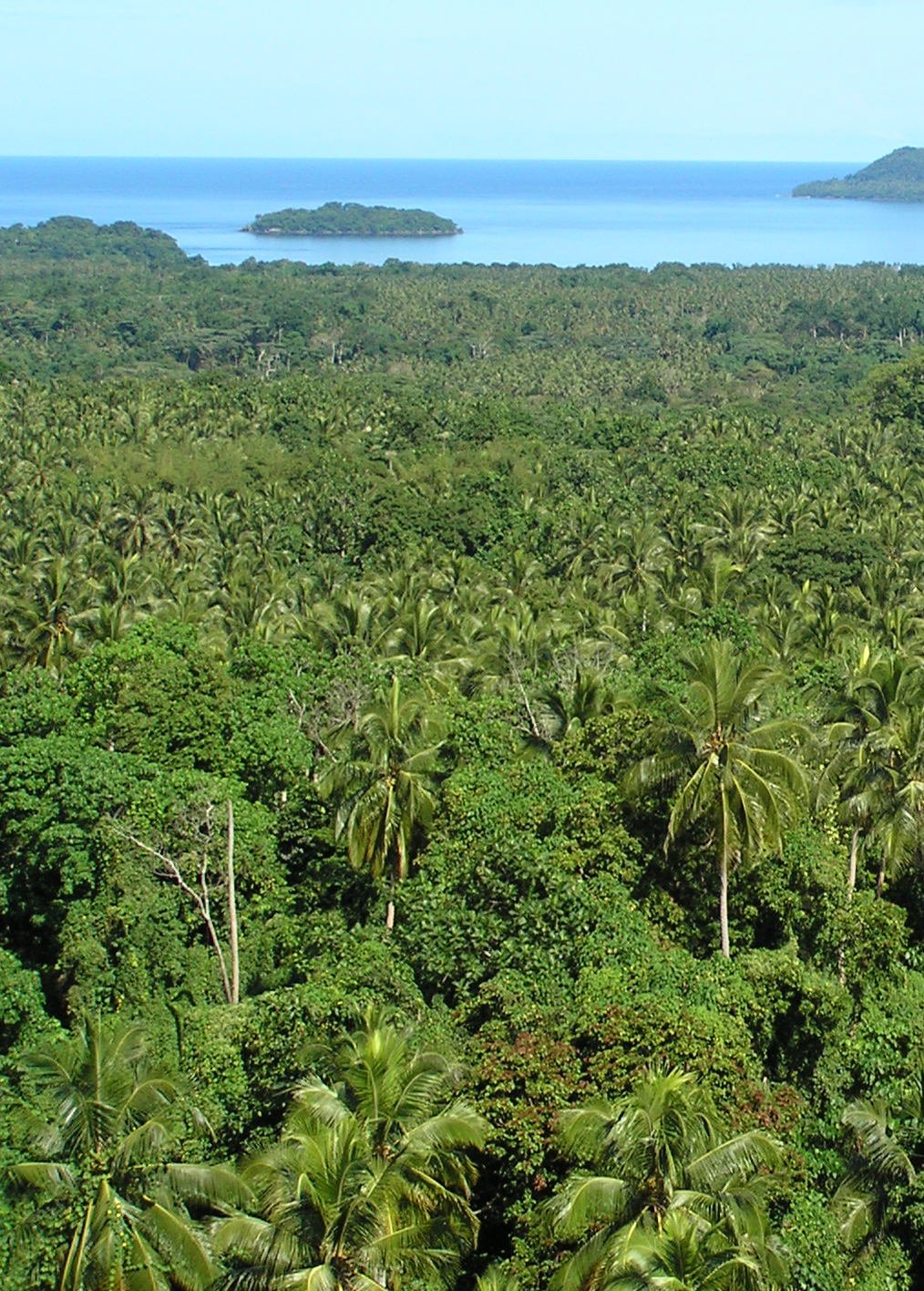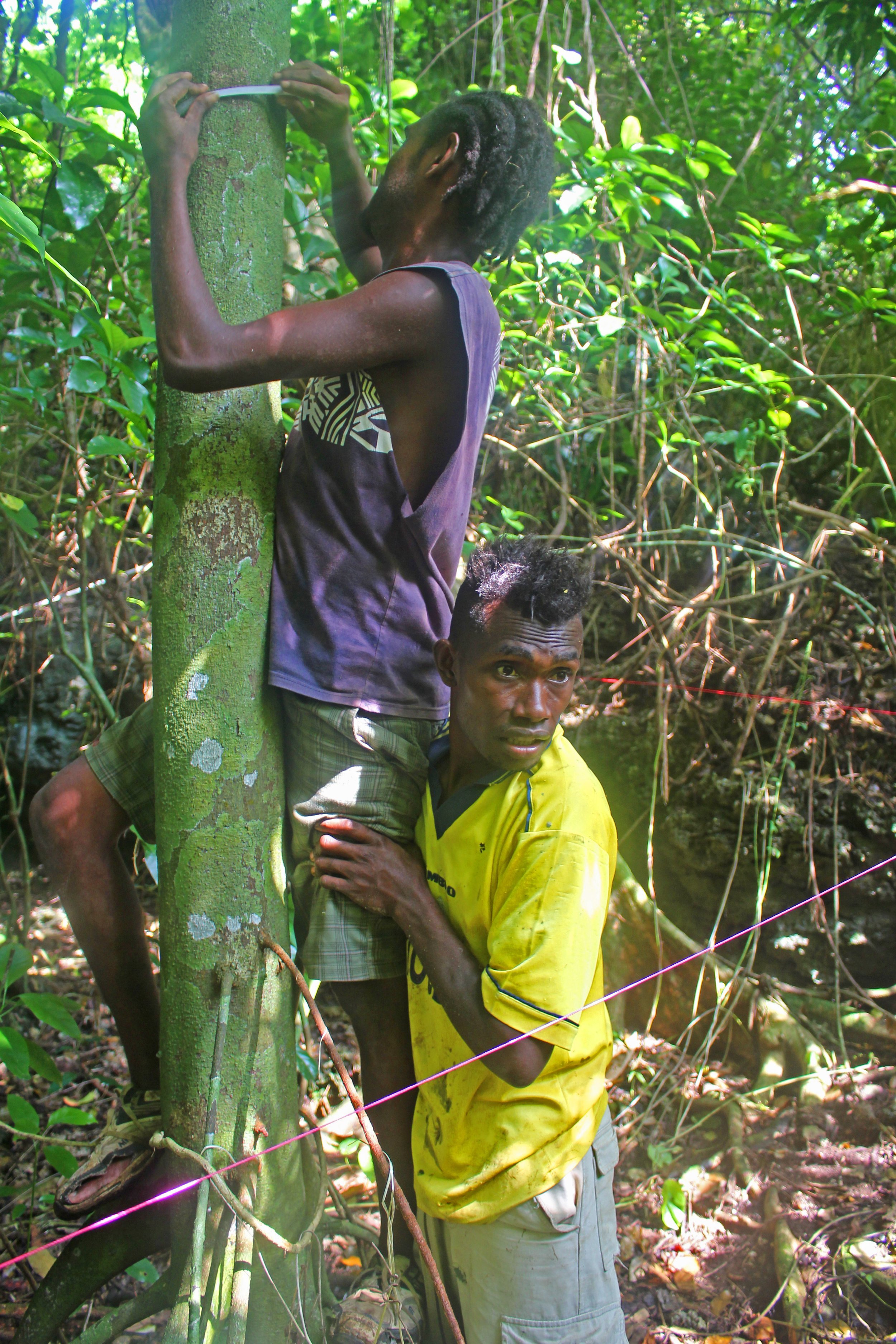
Loru Rainforest Conservation Project
The Forest
Protecting 293 ha of tropical rainforest on Eastern Espiritu Santo, Vanuatu. Habitat for the critically endangered Vanuatu Megapode bird (Megapodu freycinet layardi), and the critically endangered Coconut Crab (Birgus latro).
It is also home to several endemic birds including the Vanuatu Kingfisher (Halycon farquhari), the Vanuatu Flycatcher (Neolalage banksiana), the Vanuatu Fruit Dove (Ptilinopus tannensis), the Vanuatu White-eye (Sosterops flavifrons), the Santo Mountain Starling (Aplonis santovestris), the Vanuatu Imperial Pigeon (Ducula bakeri), and the Golden Whistler (Pachycephala pectoralis).
This rainforest also provides valuable protection from cyclones, floods and droughts for the Loru local people.
The People
This project is owned by the Serkar Clan of indigenous ni-Vanuatu landowners at Loru, Espiritu Santo, Vanuatu. The clan consists of five extended families of some 50 individuals.
These landowners have given up rights to land clearance for coconut plantations in exchange for the opportunity to sell rainforest carbon offsets as a way of generating revenue for local economic development.
This project also provides governance and management support and capacity building for community enterprise at Loru. This is to help the Loru landowners manage the rainforest conservation project and develop spin-off community businesses - the first of which is a community business producing and selling agroforestry produce (e.g. Canarium nuts) from adjacent lands that they own and manage.
The Loru Rainforest Conservation Project is located in eastern Espiritu Santo, in Vanuatu.
The Location
Technical Stuff
Loru Rainforest Conservation Project
Project Name
293 ha
Project Area
Ser-Thiac Business (landowner business entity)
Project Owner
Nakau (community coordination lead); Ekos (technical lead)
Project Developer
Eastern Espiritu Santo, Vanuatu
Project Location
Deforestation and conversion to pastoralism and copra production.
Baseline Scenario
Permanent forest protection
Project Scenario
Avoided deforestation; enhanced natural regeneration
Activity Type
Carbon sequestration; biodiversity conservation; water quality protection; climate resilience
Project Benefits
N/A
Trees Planted
26,504 tCO2e
Carbon Credits Issued
Carbon Credit Standard
Verifier
Sold out, awaiting next issuance
Carbon Credit Registry
CPMA International (Sweden); Dr Noim Uddin
Carbon Credit Status
Follow The Money
Rainforest conservation costs money. The main cost elements are:
Opportunity costs. Logging and agricultural revenues the landowners gave up in order to pursue a conservation project on this land.
Conservation management costs for rainforest protection including control of invasives.
Measurement, reporting and verification costs of an internationally certified project.
When carbon credits are sold from this project the revenue goes to cover these costs.
Partnership For Nature
Ekos served as technical lead for the development of this project. This was a fruitful partnership between Nakau, Live & Learn International, and the local community. Ekos also co-founded Nakau along with Live and Learn International, but we are no longer a shareholder.
The project would not have been possible without each contributor to this partnership for nature.











